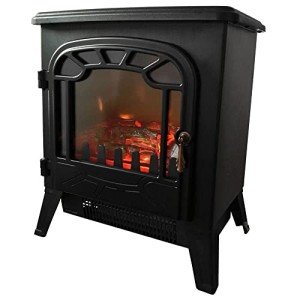One Small Fireplaces Success Story You'll Never Imagine
A Comprehensive Guide to Small Fireplaces: Efficient Heating and Cozy Living
In a period where energy effectiveness and space optimization are ending up being progressively crucial, small fireplaces have actually become an enticing option to traditional, large hearths. These compact heating solutions offer heat and a focal point for any room, heightening both comfort and aesthetic appeal. This short article checks out the different kinds of small fireplaces, their benefits, setup considerations, and upkeep ideas, ultimately helping homeowners make informed decisions when considering these lovely heating alternatives.
Comprehending Small Fireplaces
Small fireplaces use a range of styles, including electric, gas, ethanol, and wood-burning designs. Each type provides distinct benefits and style possibilities, making them ideal for various living spaces.
Kinds Of Small Fireplaces
Fireplace Type
Description
Pros
Cons
Electric
Utilizes electrical energy to produce heat. Uses many styles, including wall-mounted and freestanding units.
- Easy to set up
- Low maintenance
- No venting required
- Limited heat output
- May incur higher electrical power expenses
Gas
Burns natural gas or gas. Typically available as logs in a traditional fireplace or modern designs.
- Efficient heat output
- Cleaner than wood
- Easy ignition
- Requires gas line installation
- Some systems require venting
Ethanol
Burns bioethanol, providing genuine flames without a chimney.
- Eco-friendly
- Portable
- No setup needed
- Limited heat output
- Higher fuel costs
Wood-Burning
Traditional fireplaces that burn firewood. Often utilized in more rustic settings.
- Great heat output
- Rich ambiance
- Can be used during power outages
- Requires a chimney
- Regular maintenance and cleaning
Advantages of Small Fireplaces
- Space Efficiency: Small fireplaces are perfect for apartments, condominiums, and smaller homes. They make the most of warmth without taking up extreme floor space.
- Economical Heating: In certain cases, small fireplaces can supplement main heater, decreasing general energy expenses while producing a more comfy environment.
- Ambiance and Aesthetics: They provide a welcoming centerpiece to a room, developing a cozy atmosphere best for relaxation and social events.
- Flexibility: Available in different designs and styles, small fireplaces can match any decoration, from modern minimalist to rustic traditional.
Installation Considerations
When contemplating a small fireplace, setup is a vital factor that can impact the option of design. Below are helpful factors to consider:
- Local Regulations: Building codes can differ by area; constantly inspect regional guidelines before setup.
- Ventilation Needs: Depending on the type, small fireplaces might require various ventilation systems. Gas fireplaces might need venting outdoors, while electric models don't.
- Power Source: Electric models need distance to electrical outlets, while gas and ethanol designs may require a gas line or fuel storage.
- Weight and Structure: Installing wall-mounted units might need enhanced wall locations, whereas free-standing models are easier to move.
Upkeep Tips
Like any other home appliance, small fireplaces need regular maintenance to function efficiently and securely. Here are vital maintenance suggestions for numerous fireplace types:
For Electric Fireplaces:
- Cleaning: Wipe down the unit with a soft fabric to eliminate dust and keep the heating system ducts clear.
- Examination: Check the power cord routinely for any damages or indications of wear.
For Gas Fireplaces:
- Annual Inspections: Schedule yearly examinations by a professional to make sure safe gas flow.
- Tidy the Logs: Regularly clean the burner and logs to maintain optimal performance.
For Ethanol Fireplaces:
- Fuel Storage: Store ethanol fuel safely away from direct sunlight and heat sources.
- Regular Cleaning: Clean the burner after each use to preserve efficiency and prevent soot buildup.
For Wood-Burning Fireplaces:
- Chimney Sweeping: Have the chimney expertly cleaned when a year to avoid creosote accumulation.
- Fire wood Storage: Only usage dry, skilled wood to minimize smoke and promote efficient burning.
Regularly Asked Questions
1. Can I install a small fireplace myself?
While some electric and ethanol fireplaces are reasonably simple to install, it is a good idea to employ an expert for gas and wood-burning systems to guarantee compliance with local building codes.
2. How much does it cost to run a small fireplace?
The cost will vary depending on the kind of fireplace. Normally, electric fireplaces might incur greater electrical energy expenses, while wood-burning alternatives can draw from eco-friendly fire wood products.
3. Do I require a permit for installation?
Permits are generally needed for gas and wood-burning fireplaces due to their setup complexity and safety guidelines. Constantly consult local authorities.
4. How long can I run an electric fireplace?
Many electric fireplaces can run for long durations; nevertheless, it's recommended to follow maker standards to avoid overheating or harming the unit.
5. What type of small fireplace is best for a small space?
This mostly depends on private needs. Electric models are flexible and easy to install, while gas and ethanol choices offer real flames with efficient heat output.
Small fireplaces represent a functional and elegant option for those seeking effective heating options in compact home. With address here offered, property owners can pick models that line up with their aesthetic preferences and area requirements. By understanding the setup processes and regular upkeep required, people can delight in the convenience and atmosphere that small fireplaces offer for years to come. Whether for a cozy night in your home or a welcoming space for events, small fireplaces are an enduring component of modern and traditional decor alike.
